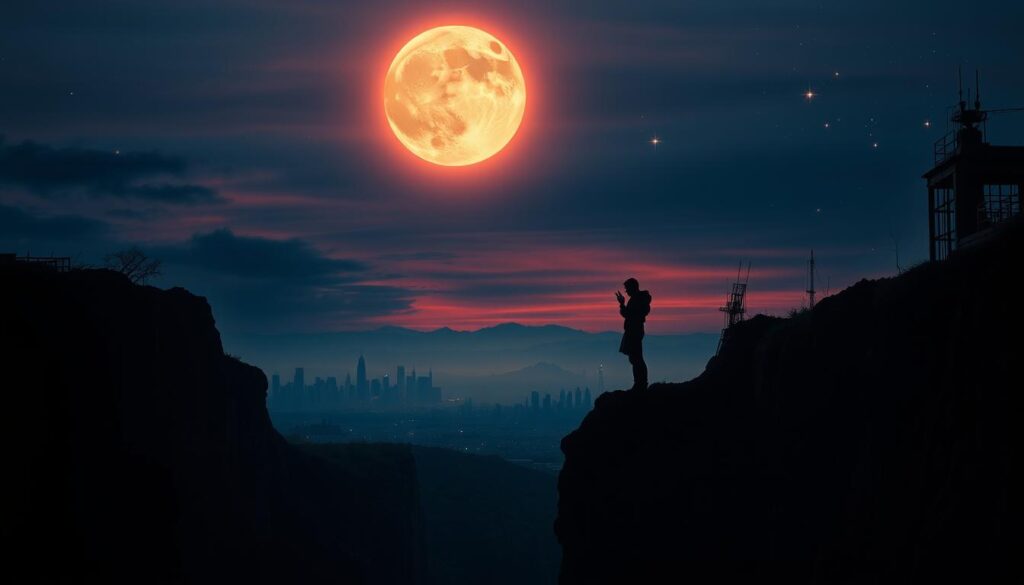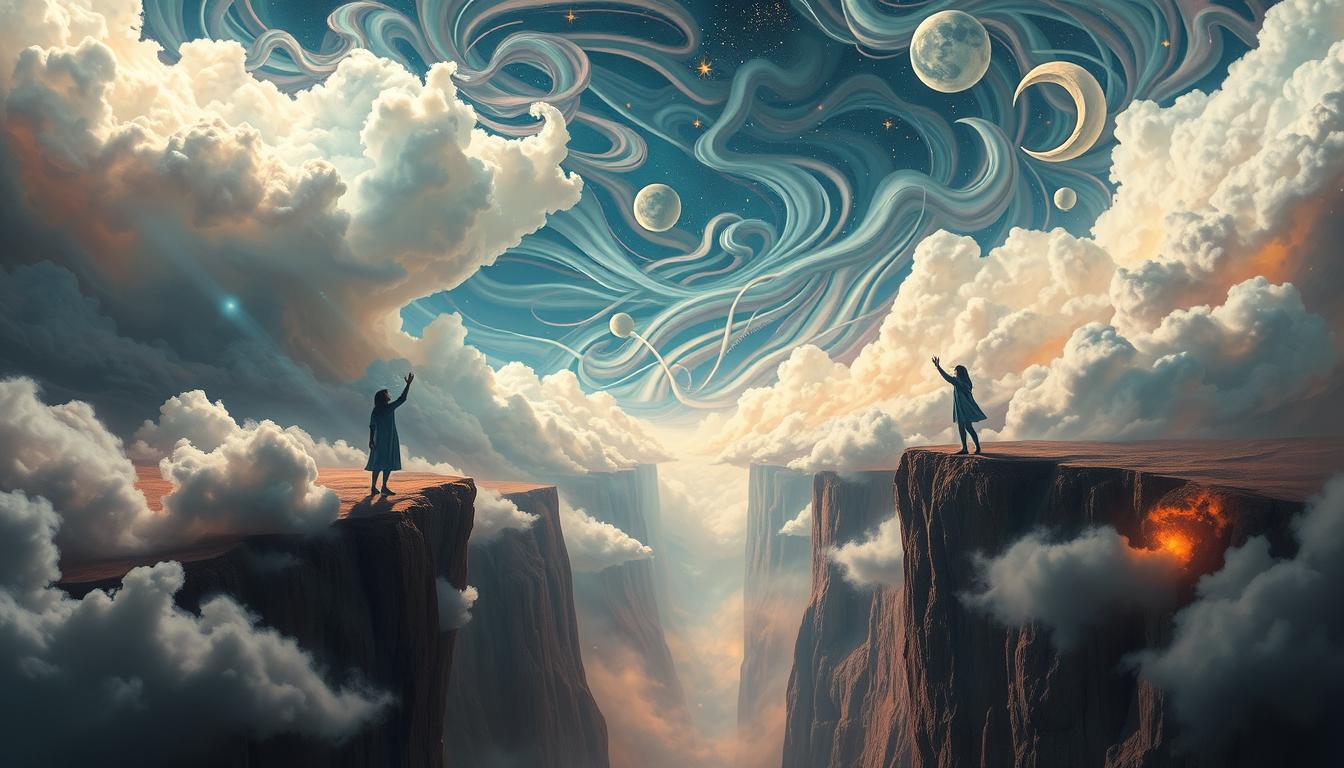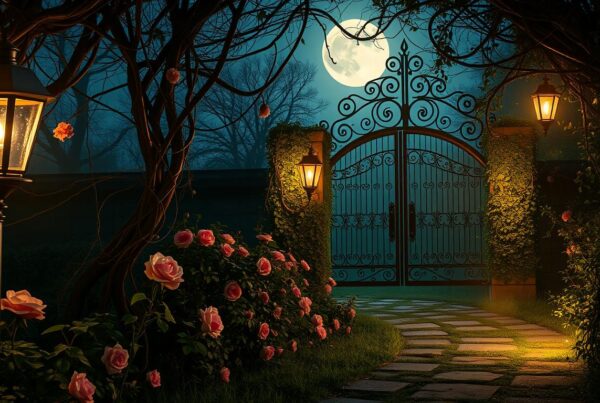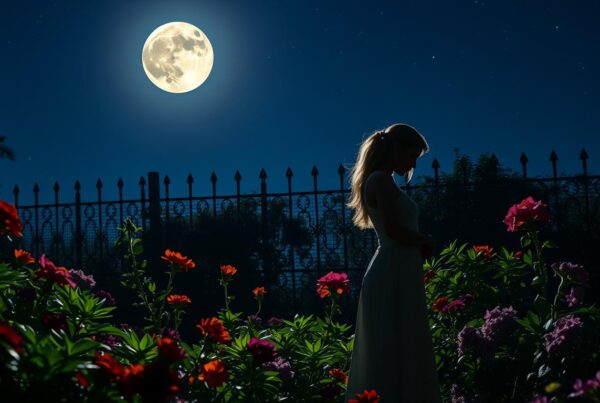The star-crossed romance still draws us in today. It’s a timeless tale of love that’s doomed from the start. This theme shows how love can be crushed by things outside of our control.
Shakespeare first used the term ‘star-crossed’ to talk about fate. It shows how our lives are shaped by forces beyond us. These stories are still loved today, showing the power of love and fate.
Introduction to Star-Crossed Lovers in Fiction
Star-crossed lovers have been a big part of stories for centuries. They capture our hearts and imaginations. These tales often show deep emotional conflicts and barriers from society.
Historical Context
The idea of star-crossed lovers goes back to old stories and myths. These stories saw love as something hard to get. “Romeo and Juliet” by William Shakespeare and the Greek myth of Orpheus and Eurydice are examples. They show how love has been seen as unattainable for ages.
Defining Characteristics
Star-crossed lover stories often have opposing forces. These can be family feuds, social status differences, or other pressures. These tales suggest that the love is doomed from the start. This adds to the sense of tragedy.
Enduring Popularity
The lasting love for star-crossed lovers in stories shows their deep emotional value. These stories touch us deeply, exploring love, loss, and the challenges of unattainable love. Their appeal is in connecting with our basic human experiences, making them a key part of literature.
Love vs. Fate: The Central Dilemma
In the world of star-crossed lovers, love and fate are at the core. This conflict, seen through predestined romance, shows the lovers’ struggle. It raises big questions about if true love can beat destiny.
For those in a predestined romance, love feels both meant to be and out of reach. Their story is a deep dive into the human experience. It shows the battle between following your heart and fate’s pull. This debate makes readers think about their views on destiny and choice.
The big question is: fate or free will? Are the lovers’ paths set, or can they change? These stories make us wonder if their strong bond comes from fate or their choices. This mystery makes their tales endlessly interesting.
These tales of love versus fate mirror our lives. They show our deepest fears, hopes, and the fight to mix love with the uncontrollable. These stories grab us by showing a world where love and fate’s battle never ends.
The Role of Conflict in Star-Crossed Lover Narratives
Conflict is key in star-crossed lover stories. It drives the plot and makes us feel more connected. Both outside and inside conflicts make the story richer, adding many obstacles for the lovers to face.
External Conflicts
Outside conflicts come from things beyond the lovers’ control. They often involve family feuds and social rules. Think of “Romeo and Juliet” or “Pride and Prejudice” by Jane Austen.
These conflicts make the lovers’ journey exciting. They face big challenges and cultural differences that test their love.
Internal Conflicts
But there’s more to it than just outside pressures. Inside conflicts add depth to the story. Characters deal with their own feelings and mental battles.
They struggle between what they want and what they must do. This inner fight shows how strong their love is and what they’re willing to give up.
Iconic Examples of Star-Crossed Lovers in Modern Literature
In modern literature, some stories really stand out. Audrey Niffenegger’s “The Time Traveler’s Wife” is one. It mixes classic and modern beautifully. Henry and Clare’s love story is a perfect example of tragic romance, fighting against time.
John Green’s “The Fault in Our Stars” also shows star-crossed love. Hazel and Gus face big challenges because of illness. Their story is both a classic and a modern tale, touching many hearts.
“Me Before You” by Jojo Moyes is another great example. Louisa and Will’s story is about sacrifice and finding happiness. Their love faces big obstacles, showing the power of tragic romance. Their story is a mix of old and new, making it unforgettable.

These novels show how classic romance themes meet modern storytelling. “The Time Traveler’s Wife,” “The Fault in Our Stars,” and “Me Before You” are great examples. They prove that tragic romance in fiction still captivates us, across all ages.
The Emotional Impact on Readers
Star-crossed lovers stories deeply affect readers. They stir strong emotions and moral questions. These tales explore human nature, making readers feel connected through shared experiences.
Empathy and Relatability
These stories touch readers’ hearts by making them feel empathy and connection. Seeing themselves in characters like Romeo and Juliet or Hazel and Augustus from “The Fault in Our Stars” strengthens this bond. It’s about love, loss, and facing big challenges together.
Emotional Catharsis
Reading about star-crossed lovers also brings emotional release. It lets readers safely explore complex feelings. This can be healing, helping them deal with their own grief and sadness.
The Tragic Beauty of Star-Crossed Lovers in Modern Fiction
Modern fiction shows the tragic beauty of star-crossed lovers in a special way. These stories grab us with their deep emotions and sorrow. They make doomed love hard to resist.
Beauty in Tragedy
Writers make their stories beautiful by showing the beauty in tragedy. They fill the characters’ paths with strong, yet delicate feelings. The pain and suffering they show is both real and captivating.
The doomed love’s allure grows from the deep, complex bond between the lovers. This pulls readers into a moving, emotional journey.
Why We Keep Coming Back to These Stories
The appeal of star-crossed lovers is in their reflection of our own lives. Even with sad endings, these stories show the true power of love and loss. They draw us in with their dramatic struggles and deep emotions.
These tales let us explore human feelings safely. The sorrow and doomed love in them offer a release and remind us of love’s enduring power, even in tragedy.
The Influence of Classical Literature on Modern Storytelling
Classical literature is a treasure trove for today’s stories. It mixes old themes with new ideas. This mix adds depth and richness to our tales.
Shakespeare’s Legacy
Shakespeare’s impact on today’s stories is huge. His “Romeo and Juliet” has shaped our view of love. It shows the power of forbidden love and tragic fate.
His stories of love and fate still inspire writers. They show how timeless human feelings and struggles are.
Adaptations and Reimaginings
Modern stories often connect the old with the new. They take old themes and make them fresh for today’s viewers. This way, they honor the classics and reach more people.
By using old themes in new ways, creators make stories that feel both new and old. They show how these timeless tales still speak to us today.
Star-Crossed Lovers in Contemporary Young Adult Fiction
In YA books, the idea of star-crossed lovers is very appealing to young readers. It’s like a modern Romeo and Juliet story. These tales of teenage love and tragedy fill bookshelves.
Star-crossed lovers in YA books show deep emotions that teens can relate to. These stories dive into the ups and downs of love. They make the characters’ feelings real and the risks very high.
These lovers also face today’s problems, like social gaps and cultural differences. Authors like Suzanne Collins and John Green tackle these issues. They keep the core of doomed love alive in their stories.
These stories are more than just love tales. They’re about growing up, finding oneself, and being strong. They let young readers see their own struggles and feelings about love and loss. The timeless charm of star-crossed lovers in YA books will keep captivating readers for years to come.
Cultural Variations in Star-Crossed Love Stories
The theme of star-crossed lovers is found all over the world. These stories are filled with cultural tales, showing us both common and unique love tragedies. They touch our hearts, no matter where they come from, showing us love’s power.
Western Interpretations
In the West, star-crossed lovers are often seen through Shakespeare’s works. Romeo and Juliet is a big example, showing us love’s power against all odds. These stories show how love can grow and fail, facing big challenges.
Non-Western Narratives
Other cultures add their own twist to star-crossed lovers, making love stories richer. In Bollywood, movies like “Devdas” mix love with cultural tales, showing the impact of society and tradition. Japanese stories, like “The Tale of Genji,” weave love and politics together, showing love’s universal appeal.
Star-crossed lovers stories from around the world grab our attention. They show that love’s journey and its challenges are something we all share. These stories touch our hearts, reminding us of love’s power.
Real-Life Inspirations Behind Fictional Star-Crossed Lovers
Many famous stories of star-crossed lovers come from real-life love affairs. These true stories make the fictional tales more real and touching. For example, the love story of Percy Bysshe Shelley and Mary Shelley inspired their writing.
The love story of F. Scott Fitzgerald and Zelda Sayre also shows the muse-effect in literature. Their complicated love life influenced Fitzgerald’s “The Great Gatsby.” It added deep emotions and conflicts to the story.
The tragic love of Anthony and Cleopatra has inspired many stories. It shows how love can be powerful, even in hard times. Mixing real-life love stories with literature makes these tales timeless and loved by all.
The Role of Setting in Enhancing Tragic Love Stories
In tragic love stories, the setting is key. It makes the emotional and thematic parts of the story stronger. These worlds pull readers into the lovers’ stories, making them more moving and deep.
Through special places and times, the setting can turn a simple love story into a timeless tragedy. It adds social commentary, making the story richer.
Symbolic Locations
Symbolic locations are more than just scenery. They act like characters, showing the lovers’ struggles and love. Think of the wild moors in “Wuthering Heights” or Verona’s busy streets in “Romeo and Juliet.”
These settings help create worlds that show what’s inside the characters. They also show the fate that awaits them.
Era and Social Contexts
The time and social settings are also very important. They add depth to the stories. Historical settings show how society, class, and family rules affect the lovers.
For example, “The Great Gatsby” uses the 1920s to talk about class and the American Dream. “Giovanni’s Room” explores gender and identity in 1950s Paris. These settings add layers, showing the lovers’ struggles are not just personal but also reflect bigger social issues.
Film Adaptations of Star-Crossed Lovers Stories
Film adaptations of star-crossed lovers stories have long captivated audiences. They bring beloved narratives from page to screen with unmatched emotional depth. These cinematic retellings offer viewers a fresh perspective, immersing them in the visual storytelling.

From Baz Luhrmann’s audacious take on Shakespeare’s “Romeo + Juliet” to Joe Wright’s heart-wrenching adaptation of “Atonement,” tragic romance films have found an enduring place in cinema. These movies leverage the power of visuals and performances. They evoke the intense emotions and conflicts that lie at the heart of star-crossed romance.
The visual storytelling in film makes the heartbreak of star-crossed lovers’ narratives even more palpable. Audiences are not just reading about the lovers’ plight. They are experiencing it visually and aurally, making the connection to the characters’ turmoil intimate and affecting. This level of engagement is what makes tragic romance films an impactful medium for these timeless stories.
In essence, the film adaptations breathe new life into time-honored tales. They ensure that the tragic beauty of star-crossed lovers continues to mesmerize new generations of audiences.
Why Readers Are Drawn to Tragic Love Stories
Stories of doomed love have always grabbed readers’ attention. But why do these tales of tragic love touch us so deeply?
Psychological Insights
Stories of tragedy offer a safe space to feel emotions. They let us explore sadness and empathy in a safe way. This lets us face our fears and vulnerabilities, but from a safe distance.
Emotional Engagement
Tragic love stories make us feel deeply. They take us on a rollercoaster of emotions. This makes us connect strongly with the characters and their story.
These stories are powerful because they touch our hearts. They show us why tragic love stories are so important in fiction today.
Conclusion: The Enduring Legacy of Star-Crossed Lovers
The story of star-crossed lovers touches hearts all over the world. These stories mix love and loss in a way that deeply moves us. They show us the power of human feelings and the strong pull of fate.
These tales are relatable to everyone. They show the struggles that many face, from Shakespeare’s “Romeo and Juliet” to today’s young adult books. They show how love can conquer even the toughest challenges.
The settings and cultures of these stories add depth and interest. They make the tales exciting and relevant for each new generation. The lasting impact of these stories shows their deep connection to our hearts and minds.



